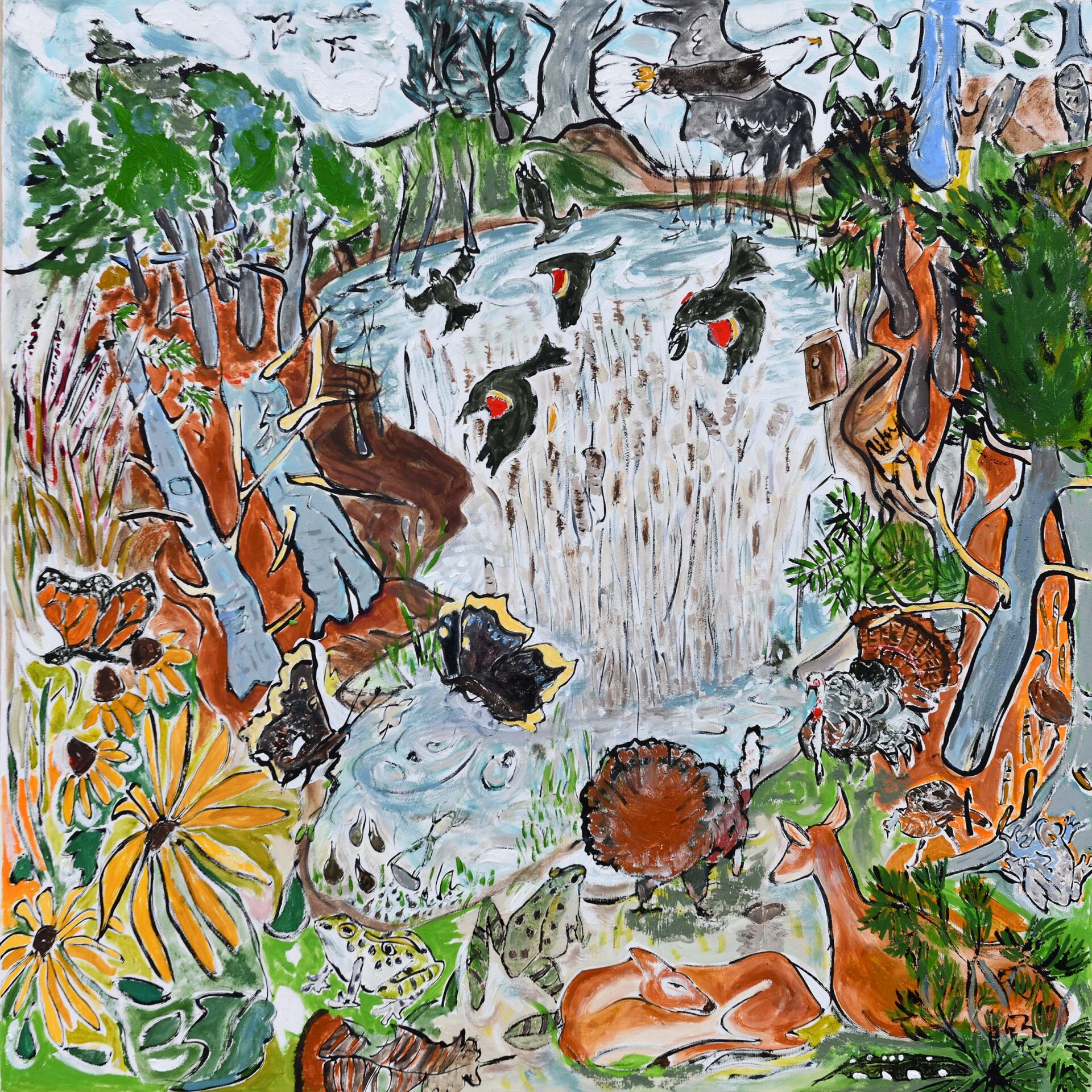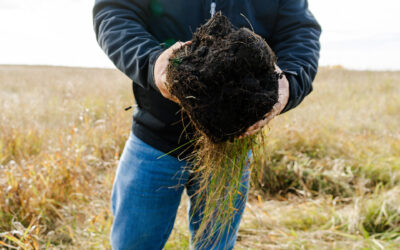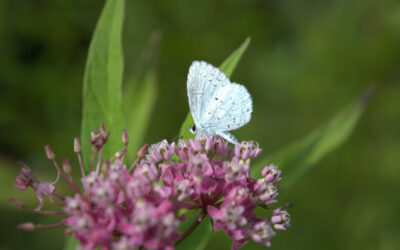At the frog bowl, nature is art itself

This painting shows a snowy winter scene with a red tail hawk flying overhead. Coyotes materialize out of the bull rushes within the frog bowl. The large reforestation project is also captured which includes 300 white pine, red osier dogwoods, Tallgrass Prairie, and some hardwoods.
Liz and Bruce Milner’s Port Dover farm is a haven for wildlife including white tail deer and wild turkeys, with many other small mammals, birds, and amphibians. They consider themselves fortunate to live alongside nature and play a role in its preservation. The Milner’s projects created with ALUS Norfolk include a wetland — affectionately referred to as the frog bowl — and various tree planting projects that were established in 2010. Their tree projects include mixed deciduous and coniferous scatter plantings, a hardwood windbreak, and a pollinator hedgerow. With just under two acres enrolled in ALUS altogether, their projects restore areas that aren’t suitable or profitable to farm. Instead, these areas are providing habitat and food sources for wildlife and enhancing an existing naturalized corridor.
As a local artist, Liz finds the wildlife that’s drawn to her farm by the projects an inspiration for her paintings. Examples of her work can be found throughout Norfolk County including the Woodhouse Gallery in Port Dover, which will be featuring Liz’s latest paintings in June.
Liz credits her interest in nature drawings to her father, Harry B. Barrett, Norfolk naturalist, historian, and author of The Nature of Norfolk. Through his nature lore columns in the Simcoe Reformer, Harry described his encounters with wildlife, flora & fauna throughout the seasons, and Liz provided illustrations. Liz values the connections she made over the years with people like Fenwick Lansdowne, a Canadian wildlife artist, and Monroe Landon, who was concerned about the preservation of nature. Her dad was instrumental in these connections and Liz fondly remembers time spent eavesdropping on – as well as being directly involved in – conversations with her dad and his colleagues as they discussed the natural world.

This painting heralds the arrival of spring, depicting red wing blackbirds that have returned to take up residence within the reeds in the frog bowl. The red tail hawk has been replaced by a Bald Eagle. Mallards also make their presence known as they spend time feeding.
Looking ahead to the future of their farm, Liz and Bruce intend for it to remain a corridor for wildlife. An extensive portion of their land is naturally forested. The remaining 14 acres of workable land is rented to a local cash crop farmer. They’ve collaborated with the same farmer over the past several years and value the balance between nature and conventional farming.
Liz and Bruce encourage other landowners with marginal farmland to participate with ALUS. When asked what she would say to someone considering joining the program, Liz said: “Get some binoculars! Adding your acreage to the big picture across Canada is an honourable thing to do”.
Liz and Bruce love observing the seasonal changes in the species that inhabit the frog bowl, which, of course, includes frogs! Several frog species can be found in and around the wetland including treefrogs, spring peepers, and leopard frogs. In the spring, Liz and Bruce often see swans heading for Long Point marsh, as well as sandhill cranes. Wild turkeys are in abundance as well as white tail deer who spend nights sleeping among the tall grasses. By mid-summer, the Black-Eyed Susan wildflowers bloom profusely. Although they have many favourite wildlife encounters, meeting skunks that are digging in the tall grasses and encountering American Woodcocks at close range top the list.
“The root of the [ALUS] program has remained the same and yet it’s remarkable to see how it has grown since we started with ALUS.”
The same can be said at the Milner farm where the ALUS projects remain the same, yet they also change throughout the year supporting nature throughout its cycles.
ALUS Norfolk would like to extend a heartfelt thank you to the Milners for their stewardship over the years, their dedication to ALUS, and their reverence for nature.
About ALUS Norfolk
Norfolk County has the oldest continuously running ALUS program in Canada. Piloted in 2007, ALUS Norfolk has evolved into a permanent, county-wide program.
With over 190 farm families already engaged and more than 1,600 acres enrolled in the program, ALUS-Norfolk is helping to rebuild the natural environment via healthy and sustainable farmlands.



